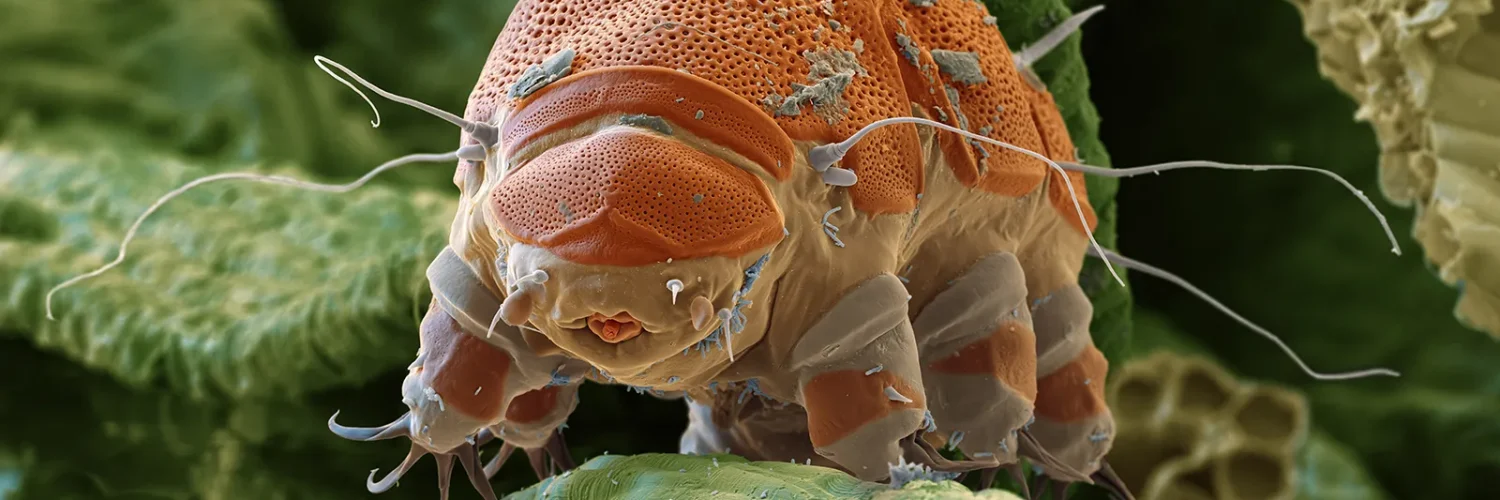Gene editing may unlock survival secretes of near Indestructible animal
By: Rhodilee Jean Dolor
Tardigrades are among the most resilient organisms on our planet. They can survive in extreme conditions that could otherwise kill other forms of life, spurring curiosity in this microscopic, eight-legged animal.
The Incredibly Resilient Tardigrades
Tardigrades, also known as water bear or moss piglet, can withstand temperatures as cold as minus 328 degrees Fahrenheit and hotter than 300 degrees Fahrenheit. They can also survive exposure to boiling liquid, radiation and up to six times the pressure of the deepest trenches of the ocean.
An experiment aboard the International Space Station (ISS) in 2021 found that tardigrades in low-Earth orbit can weather exposure to the vacuum of space, cosmic rays and solar ultraviolet radiation.
In 2016, Japanese researchers also reported that they have successfully revived tardigrades that were frozen for 30 years. The animals recovered fast. One of the tardigrades started eating algae 13 days after it was rehydrated and eggs became visible inside the organism’s body just 22 days after its revival.
Engineering Tardigrade Genes With DIPA-CRISPR
According to Associate Professor Takekazu Kunieda, from the Department of Biological Sciences, University of Tokyo, understanding the superpowers of these aquatic invertebrates requires knowing how their genes function.
In a new research published in the journal PLoS Genetics on June 13, Kunieda and colleagues edited the genes of a highly tolerant species of tardigrade known as Ramazzottius varieornatus.
More than 1,300 species of tardigrades are known to exist and they can be found in a range of environments from mountaintops, deep sea and the Antarctic. The Ramazzottius varieornatus that Kunieda and colleagues used in their study is an all-female species of tardigrade that reproduces sexually and is known to be extraordinarily tolerant of extreme conditions.
The researchers also used a gene editing technique called CRISPR (DIPA-CRISPR).
Scientists have previously used DIPA-CRISPR to engineer the genes of insects by altering the genome of the target organism’s offspring. The method involves directly injecting CRISPR materials into an organism that would later produce offspring that carry the induced mutation.
Kunieda and his team said that their work marks the first time that DIPA-CRISPR is used on non-insect organisms. The result suggests that the gene-editing method holds promise in shedding more light on the indestructibility of tardigrades.
“My team and I have developed a method to edit genes—adding, removing or overwriting them—like you would do on computer data, in a very tolerant species of tardigrade, Ramazzottius varieornatus,” Kunieda said. “This can now allow researchers to study tardigrade genetic traits as they might more established lab-based animals, such as fruit flies or nematodes.”
The Tardigrades’ Survival Secret
Tardigrades are virtually indestructible, thanks to their physiological makeup. In a 2022 study published in PLoS Biology, Kunieda and his team reported that tardigrades have proteins that form a gel during cellular dehydration, which would protect the cells from the mechanical stress that could otherwise kill them.
“Although water is essential to all life we know of, some tardigrades can live without it potentially for decades. The trick is in how their cells deal with this stress during the process of dehydration,” Kunieda said.
“It’s thought that as water leaves a cell, some kind of protein must help the cell maintain physical strength to avoid collapsing in on itself. After testing several different kinds, we have found that cytoplasmic-abundant heat soluble (CAHS) proteins, unique to tardigrades, are responsible for protecting their cells against dehydration.”
In a research published in the journal Protein Science on March 19, a team of researchers from the University of Wyoming reported that introducing the gel-forming tardigrade proteins into human cells can slow down metabolism. They also observed that the gels dissolve and the human cells return to their normal metabolism once the stress is relieved.
“Amazingly, when we introduce these proteins into human cells, they gel and slow down metabolism, just like in tardigrades,” said study researcher Silvia Sanchez-Martinez, from the university’s Department of Molecular Biology. “Furthermore, just like tardigrades, when you put human cells that have these proteins into biostasis, they become more resistant to stresses, conferring some of the tardigrades’ abilities to the human cells.”
A Tiny Creature’s Potential Contributions to Mankind
Kunieda and colleagues said that understanding the mechanisms behind the extraordinary tolerance of tardigrades may offer information that can pave the way for innovations and possibly life-saving vaccines and treatments.
The tardigrade’s ability to survive in a prolonged drought may help researchers find more ways to extend the shelf life of research materials, medicines and even whole organs needed for transplants.
Researchers hope that sugars and proteins from tardigrades will be instrumental in developing dry vaccines that do not require refrigeration. This will improve and lessen the costs of distribution as well as allow delivery of vaccines to remote parts of the world.
“This resilience is believed to arise from their remarkable cellular protection and repair mechanisms, which safeguard essential biomolecules and structures such as DNA, RNA, proteins, and membranes, supporting cellular functions,” Kunieda and colleagues wrote in their study. “Understanding the molecular players and mechanisms involved in these processes not only satisfies scientific curiosity but also holds promise for the development of innovative technologies with significant implications for the storage and distribution of valuable but fragile biomaterials, like biomedicines and vaccines.”
The toughness of tardigrades may also find application beyond Earth. NASA, which sent these tiny creatures to the ISS in 2021, has said that knowing what makes tardigrades highly tolerant could lead to new ways of protecting food and medicine from extreme temperatures, drying out and radiation exposure, which would be crucial for long-duration deep space missions,





